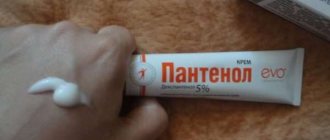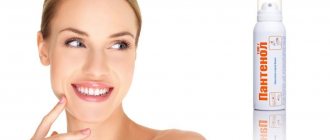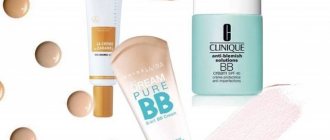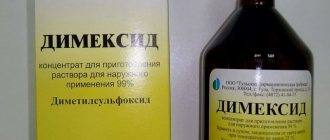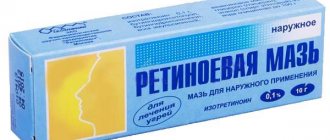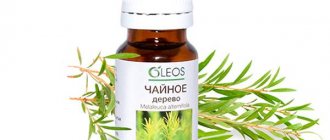What to do after a chemical peel? This question has become the most popular this fall and I can’t understand whether cosmetologists are so lazy that they don’t bother to mention it, or whether patients decisively ignore the recommendations. Honestly, I'm tired of answering the same question to everyone individually. I will answer everyone with this article and will immediately and fundamentally ignore such comments.
So, before chemical peeling, the doctor must explain to you very clearly all the details of the procedure, its sequence, time, sensations and what will happen to the face during the rehabilitation period.
After the session, he must tell you how to behave during this period, what is possible and what is not, what restrictions exist, and in what cases you urgently need to call him.
If you were not given specific recommendations or you did not remember something, there is no need to scour the Internet looking for an answer - CALL THE DOCTOR and ask what to do. In the end, girls, you are paying a lot of money, so let the cosmetologist work it off.
Ask yourself when to wash your face after peeling, when to apply panthenol, what to do with the leaving films, whether you can wear makeup, whether you need moisturizing masks, whether you can do your usual care, etc.
If for some reason you decide to use the collective wisdom of forums and blogs, then follow the standard recommendations given below.
What happens to the skin after peeling?
Cleansing the face with chemical acids, diamond or laser resurfacing damages the top layer of skin. Adverse reactions that occur after Peeling can ruin your appearance and quality of life for a long time. Typically, a woman faces the following consequences, which are the norm:
- redness;
- itching, burning;
- dehydration of the skin;
- peeling of the face.
Important! Those with sensitive skin who resort to deep or medium peeling may experience swelling and hyperpigmentation.
To quickly get rid of unpleasant consequences, it is necessary to clarify all the features of post-peeling care before the procedure. It is recommended to apply external effects on the skin using moisturizing, regenerating, healing creams.
If you do not properly care for damaged skin, scars will appear that will remain after the upper crust disappears. Also, the procedure can lead to an increase in acne, an allergic reaction, and damage to capillaries. Therefore, cleaning at home is not recommended.
Features and beneficial properties of the drug
The drug is produced by different manufacturers, so it may have different names. The drug helps with skin problems. Indications for its use are:
- furunculosis;
- acne;
- post-acne;
- burns of varying severity (thermal, chemical, solar);
- diaper rash, dermatitis (including diaper rash);
- bedsores, trophic ulcers;
- cracked nipples in nursing women;
- other skin lesions.
The drug can be used for prophylactic purposes - to prevent skin problems due to the negative impact of external factors (frost, wind, dampness, ultraviolet irradiation).
The beneficial effects of the drug on the skin are as follows:
- deep hydration, elimination of dryness and flaking;
- improvement of tissue regeneration;
- rejuvenation, smoothing of fine facial wrinkles;
- healing of wounds, reducing the severity of defects (scars, stretch marks, scars);
- cleansing;
- increased elasticity;
- elimination of swelling and signs of fatigue.
How to avoid problems?
To achieve a good effect after Peeling, it is necessary to properly treat damaged skin. Cosmetologists can recommend ointments and creams that are specifically designed for care after cleansing the face. You can also purchase a budget product at the pharmacy.
Pharmaceutical preparations must perform the following functions:
- hydration, nutrition;
- regeneration, healing;
- improving blood circulation, reducing swelling;
- increasing protective functions;
- antibacterial effect on the skin;
- protection against allergies.
Before using the cream after Peeling, study its composition. Avoid products with a lot of chemical compounds and fragrances. Preference is given to drugs based on vegetable or animal fats. If you are prone to allergies, do an allergy test.
Most often, Bepanten, Depanthenol creams or Solcoseryl ointment are used for healing after Peeling. It is necessary to choose the appropriate product depending on your skin type and type of procedure.
Release form
The drug is available in different dosage forms, each of which has its own composition and method of administration.
Spray
Panthenol aerosol is applied to the skin by spraying. It is sold in small aluminum cylinders with a capacity of 50 and 130 g. The drug has several advantages:
- Ease of use. The product can be used immediately, without preparation. Just take out the bottle and press the spray button. It is also convenient to take on trips.
- Safety. When applying the product, avoid contact with fingers. This allows you to avoid harmful bacteria getting into the container with the drug and under the skin.
The spray must be used carefully, as the smallest particles of the product can get into the eyes and cause irritation. Hold it vertically, and if foam formation is necessary, shake before use.
The estimated cost of the drug is 230 rubles.
Cream
The cream is a white homogeneous substance. The drug is available in tubes of 25 or 50 g. Its distinctive features are a pleasant aroma, light and delicate texture.
The price of the cream depends on the manufacturer. The average cost of a package is 350 rubles.
Ointment
The product is produced in the form of a homogeneous jelly-like mass of light yellow color in tubes of 25 or 50 g, has a barely perceptible odor of lanolin. The ointment costs the same as the cream.
Gel
The product in gel form does not contain flavors or dyes and does not cause allergic reactions. Thanks to this, the product can be used by those with delicate and sensitive skin.
Some manufacturers add components to the gel that have a cooling effect. This ensures comfortable use of the drug for burns.
Use of Bepanthen
Cream based on dexpanthenol is a universal remedy for sensitive skin. Promotes healing of sun or chemical burns, wounds, bedsores, diaper rash. Bepanten is a safe pharmaceutical drug. It does not contain components that cause allergies, is approved for caring for children from the first days of life, and is used during pregnancy and lactation.
This is interesting! For facial care after deep peeling, it is recommended to purchase Bepanten plus. It contains chlorhexidine, which has an antibacterial effect. With the help of this cream, the skin is disinfected and healed at the same time.
The product is used to accelerate skin regeneration, heal post-peeling burns, and eliminate acne. For the effect, it is enough to apply a thin layer of cream once a day to the face and décolleté.
Use of Solcoseryl
Solcoseryl ointment or gel restores, eliminating the negative consequences after cleansing the face. It is made on the basis of dialysate from the blood of calves. Its use during the rehabilitation period promotes the healing of burns, improves metabolism, hydration, and increases collagen production.
The budget product is used after the procedure by women over 35 years of age. Their skin requires additional nutrition and hydration. The course of treatment regulates the water-lipid balance and reduces wrinkles. If rashes or peeling appear after Peeling, it is recommended to use the gel.
Uses of Depanthenol
After deep peeling, they use Depanthenol, which is a cheaper analogue of Bepanthen. Both products have an almost identical composition; they are based on natural ingredients and vitamin B5. The drug is available in the form of a cream, ointment or spray.
The dosage form of Depanthenol is selected depending on the degree of damage. The drug promotes healing, softening, moisturizing, and increasing the protective functions of the skin. Before use, you must clean and treat your face with an antiseptic. The product creates an invisible film that protects the dermis from external influences, so it is recommended to use it in the morning.
Recommendations from cosmetologists
Before the procedure, the cosmetologist is obliged to explain all its features, as well as recommend special means for healing and restoring the skin. The rehabilitation period requires careful care. Experts recommend adhering to the following rules:
- Do not wash your face for 12 hours after peeling, do not touch your face with your hands;
- during the rehabilitation period, avoid scrubs, massages and other aggressive cosmetic procedures;
- for daily skin care, use foam or gel with a natural composition;
- bepanthen or any other post-peeling cream is used after a crust has formed;
- if acne appears after the procedure, the cosmetologist will prescribe special medications for you;
- If an allergic rash or swelling occurs, you should consult a dermatologist.
Important! After the procedure, the skin becomes sensitive to ultraviolet radiation. Therefore, it is not recommended to cleanse your face in the summer. It is necessary to use sunscreens with a high SPF (50 or higher).
After Peeling, the cosmetologist will recommend what products are best for treating the skin. If necessary, not only a cream or ointment is prescribed, but also an antiseptic drug.
HEALING
Such phenomena as redness (erythema), dehydration, swelling and itching are considered absolutely normal after peeling. These side effects accompany the healing of facial skin, especially in the first 12 hours after a “controlled chemical burn,” as peeling is often called in professional circles. To alleviate these symptoms, you can use pharmacy ointments and creams specially designed for tissue regeneration: Bepanten, Panthenol, and others like them.
Bepanten for healing with vitamins
Bepanten cream, produced in Germany, was specially created for the regeneration of damaged and irritated skin with redness (including children's skin). This is one of the most popular drugs in its category with multiple dermatological applications (burns, bedsores, tattoos, wrinkles). Bepanten promotes tissue healing after various types of peeling and enhances barrier functions.
Unlike the thicker ointment of the same name, Bepanten cream is absorbed faster, so it is preferable after peeling. Apply a thin layer to the skin for 5 days in the mornings and evenings. The main active ingredient of the cream is provitamin B5, supplemented with beeswax and almond oil. “Bepanthen Plus” also includes the disinfectant chlorhexidine.
Panthenol for healing
A more cost-effective alternative to Bepanten - D-Panthenol-cream - is also based on completely natural ingredients and dexpanthenol (vitamin B5), and therefore has gained popularity among nursing mothers in the treatment of cracked nipples and diaper rash in babies. On the farm, Panthenol cream is used not only for cosmetic purposes, but also after insect bites, sunburn, etc.
It is also available in the form of a spray, which is especially convenient when you don’t want to touch your itchy face again. However, it is worth taking into account that D-Panthenol cream does not contain antibacterial components and is not suitable for daily use.
Solcoseryl to normalize metabolism
Solcoseryl ointment for any skin type can replace Bepanten or Panthenol creams. Extracted from the blood of calves, the drug normalizes metabolism in the epidermis after chemical peeling, activates cellular respiration, relieves pain, accelerates regeneration processes, and normalizes impaired nutrition in tissues. Available in the form of ointment and jelly, suitable for use on the epidermis affected by acne and seborrhea.
Lyoton-gel for swelling and redness
Traditionally, Lyoton is used in the treatment of varicose veins, but in cosmetology it is used for the face against bruises and swelling, as well as rosacea. The principle of action is based on the beneficial properties of heparin: this substance is extracted from the liver and lungs of cattle and prevents blood from clotting. The product is economical: just squeeze out a small pea-sized amount of gel from the tube and apply with patting movements.
Troxevasin against edema
The special pharmaceutical anti-edema ointment Troxevasin is also not directly intended for the face, but its bactericidal properties help fight swelling and bags under the eyes, as well as vascular mesh, which is why cosmetologists love it. Its action is similar to Lyoton, but is designed for a longer period of use. Apply in the same way as Lyoton; can be used as a cream base for makeup, but be sure to avoid contact with mucous membranes. As an option, you can buy a cheaper analogue of Troxevasin - Troxerutin.
Uriage Pruriced gel for itching
French-made gel Uriage Pruriced with raspberries, isotonic water, calamine and Omega fatty acids helps relieve itching and burning even with chicken pox, not to mention peeling. The product, light in consistency, has a cooling effect, treats burns and prevents the formation of greasy stains on the collar. The hypoallergenic composition is suitable even for sensitive skin.
Acetylcysteine for pigmentation
The so-called “epidermal conditioner” based on the amino acid cysteine normalizes sebum production, has a wound-healing and antioxidant effect, and increases tissue elasticity. More suitable for oily skin. Helps prevent the formation of age spots after peeling. Available in powder form, for application to the face it is diluted with water to the thickness of village sour cream.
Leave a review, what do you like better: Panthenol or Bepanthen?
Reviews
“After Peeling, my cosmetologist advised me to use Bepanten Plus, which was able to replace several expensive cosmetics. On day 5, I began to lubricate the damaged areas with cream. After 2 weeks my skin became clear and soft.”
“A few days after cleansing, the skin began to itch, and it was very painful to wash my face. At this time, D-Panthenol cream saved me. After using it, the crusts softened and the feeling of tightness disappeared. Sometimes I use it when acne appears.”
“I did several courses of retinoic peeling in winter. For recovery I used Panthenol spray, and as a result I am being treated by a dermatologist. She severely burned her face and left scars on her chin and forehead. Therefore, I consider it mandatory to use a cream for post-peeling care.”
“I always use Rescuer, other pharmacy creams cause a rash and redness. The product is especially effective after home, less aggressive peeling.”
“To improve the condition of the skin, I use Bepanten for about 2 weeks after the procedure. I tried Solcoseryl ointment, which is also a very good remedy. However, it is not convenient to use; you have to wait a long time for it to be absorbed.”
Panthenol after peeling is an inexpensive and very effective restorative agent that can be purchased at your nearest pharmacy. It is imperative to apply a restorative and healing agent after peeling.
Can I use decorative cosmetics after the procedure?
Foundation belongs to decorative cosmetics. It can be used when the skin has completely recovered after peeling. The average rehabilitation period lasts two weeks.
Before using foundation and decorative cosmetics, an examination by a cosmetologist is required. He will prescribe the most harmless means.
Required use:
- cream containing UV protection of at least 30;
- non-comedogenic foundation - a cream that does not cause acne or clog pores.
READ ALSO: Facial rejuvenation: 5 recipes for “ascorbic” masks
1.What types of peelings are there?
Facial peelings are performed for various problems such as pigmentation, wrinkles, and age-related sagging.
There are three types of chemical peels:
superficial peeling
This peeling affects the upper layer of the skin and, if the rules are followed, is one of the most gentle peelings.
Superficial peeling can be done at home with certain preparation.
medium depth peeling
With this type of peeling, the acid penetrates the dermal tissue. After this peeling, the face takes much longer to recover and requires careful care.
deep chemical peeling
This is a very complex and painful procedure that should only be performed in special clinics by a qualified cosmetologist.
Medium-depth and deep chemical peeling procedures are carried out only by qualified cosmetologists; these peelings are strictly prohibited at home!
